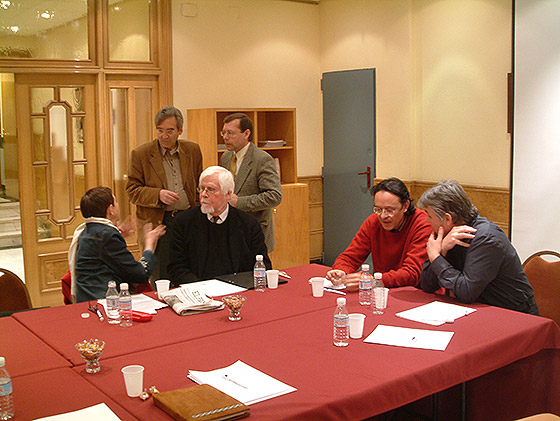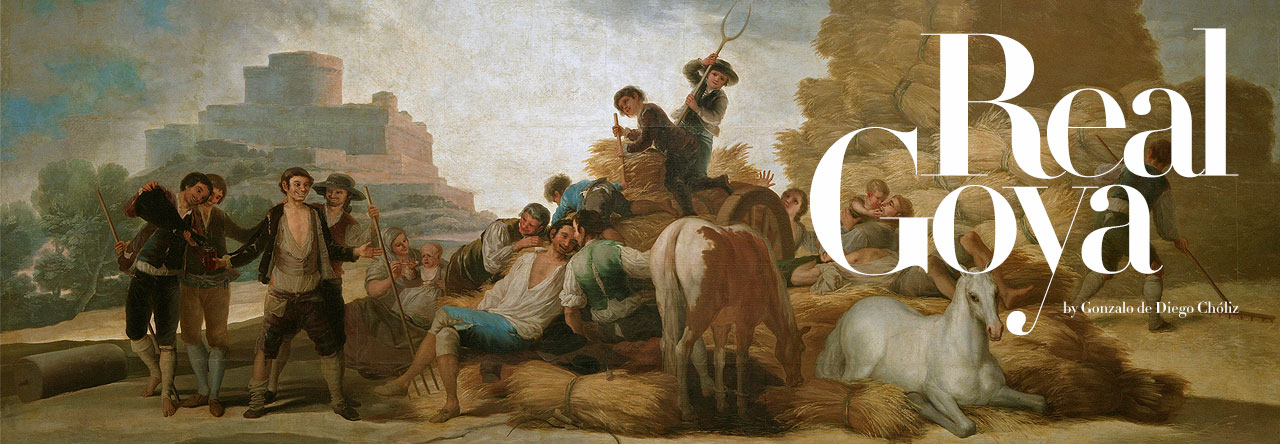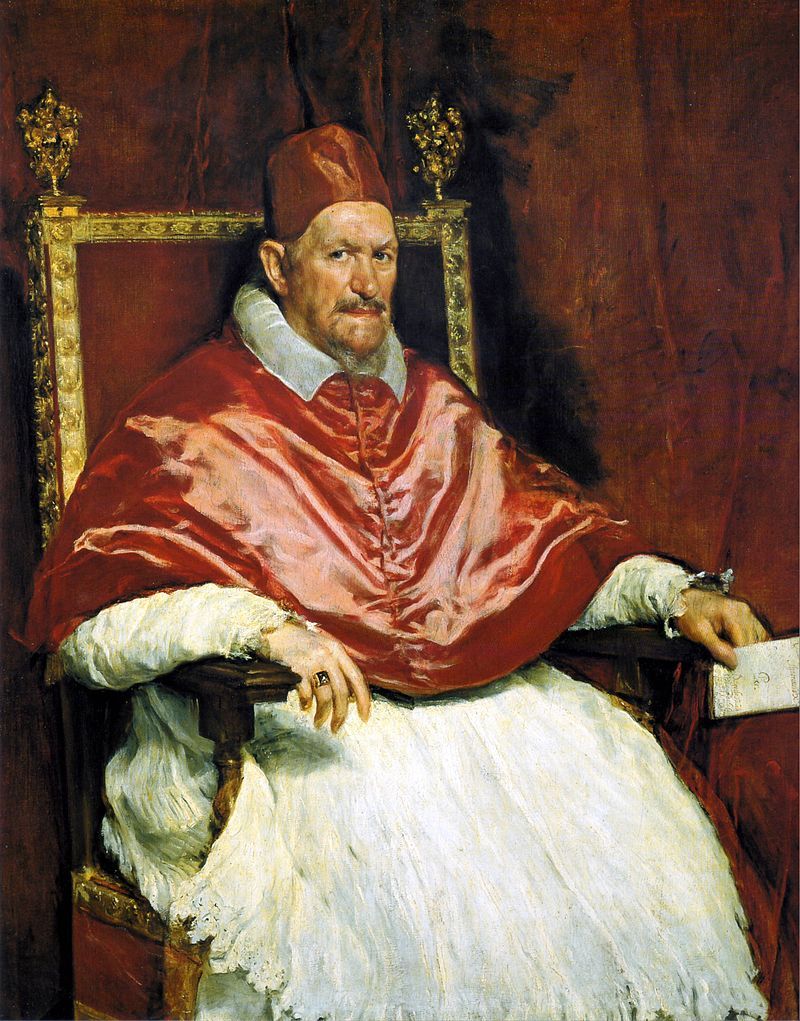Twenty years have passed. At 11 a.m. on Monday, March 27 1995 and in a pleasant glass-roofed patio couch of the Versailles Trianon Palace hotel, three people drink coffee and have a nice conversation. Pierre Gassier, first world specialist in the works of Francisco de Goya, the publisher Jan Martens and Gonzalo de Diego. French, Belgian and Spanish speak of Goya for nearly forty minutes. Martens and de Diego have gone to Versailles, hometown of Gassier.
Jan Martens is director of the publishing house, Mercatorfonds, founded by Maurice Naessens in 1968 with headquarters in Antwerp. Is one of the biggest art publishers in the world. Gonzalo de Diego, born in the land of Goya, collaborates with the Mercatorfonds in Spain and is also responsible for exhibitions of a savings bank in Zaragoza. Gassier, along with Juliet Wilson, is the author of the best catalogue of existing Goya to date.
They ask Gassier if he would be willing to lead a multidisciplinary team of first international level, which made the long-awaited and necessary reasoned catalogue of the works of Francisco de Goya. They relate to Gassier the roster of specialists who would compose the various work teams, which would be supervised and coordinated under the baton of the own Gassier. And the circumstances of the international market of art and knowledge, at that time, recommended undertaking similar editorial challenge. A work that means of not less than three years, with several multidisciplinary teams, preferably working in Spain.
Gassier appreciates the invitation but declined the offer because, according to what he says, his health is diminished for some time to now, with lung and respiratory problems and will also stress later in his view that such a work “is hexed”. That a few years earlier the Swiss publishing house Skira had made him a similar offer and due to different vicissitudes that does not itemize, the work had to be abandoned. “There is something in Goya and his study that is hexed, that does not allow to make it”.
His partners will have to reorder the work done up to then and studying how to approach it in a different way. But ultimately it was not until nine years later, Friday, 12 March 2004, when another meeting, this time in Madrid, with the intention of starting again what there agrees to be called since then as “Critical catalogue of the complete works of Goya“, under the scientific and general coordination of Juan Carrete Parrondo, – then director of culture of the city of Madrid and former curator of the National Chalcography-, will have as a thread of the work the chronology. I.e., that its apparent originality will reside in the fact that will not have artificial divisions of Goya works according to criteria related to the material support, but the only organizational criterion of the work will be the development in time and the creative space of Goya.

Meeting in Madrid.
From left to right : Jesusa Vega, Juan Carrete, Nigel Glendinning, Arturo Ansón, José Manuel Matilla and Ronny Gobin.
Six scientific personalities of the highest level, which would have a collegiate responsibility at work, were selected. It was, in essence, of eminent persons that were not related to the market of Goya but so, and in a way especially distinguished, with the academic world.
It would be formed two teams of documentarian’s researchers, composed by two or three people each. The first team would have its base in Zaragoza (for which was requested the help and collaboration of Ibercaja in the so-called Larrinaga Palace) and a second team based in Madrid, with the help of the Carlos de Amberes Foundation. At the same time was a very important photographic realization of the project, which would be of the order of 2,000 reproductions, most of them in colour.
The study would be edited by Mercatorfonds, which in its long and prestigious history had made other very important reasoned catalogues (Memling, Piet Mondrian and René Magritte, among others) guaranteeing a publishing and scientific work of first order, publishing simultaneously in languages of wider global dissemination and ensuring appropriate distribution and global broadcasting.
The resulting work, estimated in 1,950 pages, 32.5 x 24.5 cms format, would be presented in three volumes in a single case, on May 2 2008 (a very ‘goyesque’ date). The budget, estimated at 1,825,273 Euros, finally was impossible to meet because the institutions involved, for various reasons that range from administrative silence to the material impossibility, led to the suspension of the project.
A year later, in March 2005 Ibercaja -the main financial institution in the land of Goya-, publicly assumes its role of obliged first cultural promoter in the Aragon region and announces the creation of a so-called “Space Goya” which, in the real way of a museum, would meet all the work of Goya in Aragon in a single space located in the city of Zaragoza, where would collaborate closely the regional government and the aforementioned financial institution. Arose a very general project and even the layout of the museum, but everything remained undone due to change the political sign of the regional government in the next election. Bad company the policy.
Since then, new and renewed silence of almost ten years on the matter (reasoned catalogue), without any institution or patron followed the path of such an initiative. Although there have been in recent months very good news that make reborn the hope. In chronological order, the agreement between two large cultural institutions: the Prado Museum and CaixaBank, which allows large scale collaboration between the two of them and will be to the benefit of both institutions and the many Spanish and foreign visitors who attend their joint exhibitions.
If that was good news, it has been even more the agreement signed between the Prado Museum and the Botín Foundation, released on last 11 December, which, and I quote literally to Elena Viñas in ElConfidencial.com:
“Over the next five years, the Botín Foundation (Santander Bank) and the Prado Museum will draft the first reasoned catalogue of drawings by Goya, which will consist of five volumes, where the first will be released in 2016.
Thus says the Botín Foundation in a statement, which pointed out that the research project not only provides cataloguing drawings, but also their study and restoration. To date, the source of documentation that was taken as valid was the reasoned catalogue prepared by Pierre Gassier between 1973 and 1975, whose information has been widely surpassed, even though it remains an extraordinary instrument of work.
The publishing of these volumes will contribute to the enhancement of Goya drawings in what refers to its conservation, but also with respect to its authorship, dating and technical details.
In resume, 520 drawings which preserve the Prado with the 400 who treasure other institutions such as the Rijksmuseum in Amsterdam and the Art Institute of Chicago and the Metropolitan in New York will be analyzed.
It is expected that the first volume will be published in 2016, the same year that has been scheduled an exhibition of the drawings in the Botín Center, which will be inaugurated in Santander in 2015. Three years later, in 2019, the Prado Museum will host the same sample at the time that the rest of the catalogue will be presented.
The Prado confirms that the coordination and overall management of the project will be borne by the Botín Foundation, which stands at 1,700,000 Euros its budget, while the Museum will be the thinking mind of the project taking the scientific direction, that will lead José Manuel Matilla, head of the department of Prints and Drawings, and Manuela Mena, head of the area of Conservation of Paintings from the 18th century and Goya.” (sic)
Rightly begins with the drawings, which are the essence of creative work, and we can say that the jinx is finished. They have passed somewhat more than ten years since the Madrid meeting and twenty from the Versailles one and all lets believe that the bad sense breaks that has been extended throughout the 20th century. Be pleased at the end, all those we love Goya, and fingers crossed that nothing and no one troubled the work that were announced, and may arrive at the end the blessed day of 2016 that begin to show it to the world. Pierre Gassier from the great beyond and many more from the great now, we look forward in our inner selves and give hails to art and Francisco de Goya. As well as to all those who have made it possible. And we shall give thanks like grateful citizens by being culturally redeemed, because peoples who are unaware of their past hardly understand the present and, consequently, have serious difficulties to prepare for their future. From there come the balsamic effect of culture, above all in countries which, like Spain, perhaps by an excess of heritage are so ignorant of its own.
But there is still something else. I am referring to the study of cartons for tapestries of Goya currently exhibited in an exhibition of the Prado Museum, and in whose study their commissaires (Manuela Mena and Gudrun Maurer) regard them as “one of the most important and crucial for the understanding of his ideas and the evolution of his art”. (sic). The novel reading proposed meets Goya cartons by issues confronting them among themselves, but also with works of contemporaries and predecessors such as Tiziano, Rubens or Velazquez.
Thus, out of the museums of Amsterdam, Chicago, New York or Boston; out of Madrid with its Museum of Academy and National Chalcography; out, about everything and above all of the Prado Museum, but the more than commendable collaboration agreement between CaixaBank and the Prado Museum, which is owned by all Spaniards, practically there is nothing noteworthy. Although despite some misdirected institutions which, at this point in the calendar, are still to reach a certain prestige in the study and treatment of the figure and the work of Goya.
Putting on another way, we can conclude that 2015 indicates that something truly serious moves in regard with Goya in the Prado Museum, which means to say in the entire world of Goya. That Goya begins to appear between scenes to illuminate the reason of art and that we should congratulate ourselves on this. So that at his image and likeness the ideal, perfect would be that in other places go ahead at once to be serious in life, and not keep putting off Goya forcing him once again to give way, at this point, for the benefit of cheap populisms, short-wing of farming mentality initiatives, and ultimately to marginal and trite provincial improvisations of the wannabes.
Better not to mention anyone by name, but will also be better not forget, never, that Goya is not heritage of collectors or so-called scholars specialists in the most unfortunate and mediocre adamism, but for the whole world, of entire humanity. Responsible gentlemen, remember to Machiavelli: “All see what you look like; few feel what you are” and let yourself be advised once and for whom it is proven that know and not by those who say they know. Although it was only by pollution of the spirit of time, by indirect influence (percolation), learn for once to copy what worthy of being copied and not to be marginalized. It is not difficult.
Gonzalo de Diego
Zaragoza, 29 January 2015


